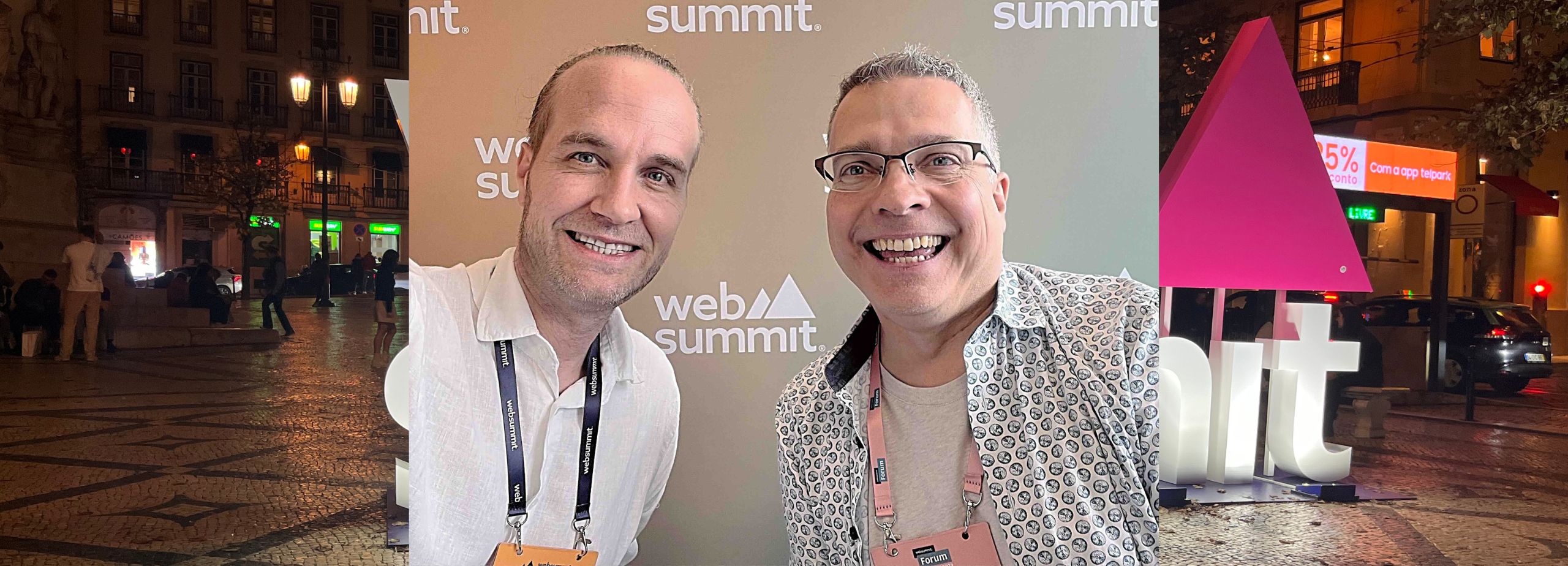We record live at EY Lisbon – with Sérgio Ferreira (Partner, EY Portugal) and Jo Smets (President, CCLBL & CEO, BluePanda) – to explore how AI moves from cost savings to growth, why the best CMOs practice augmented intelligence, and how digital agents will soon work alongside people. We unpack trust, search shifts, reskilling, sustainability, and the new consulting playbook.
• Live context at AI and marketing event with EY and CCLBL
• Tools that speed research and content while keeping human editing
• Optimization wins in finance, HR, contact centers, and retail assistants
• Growth from 24/7 service and instant answers on trained manuals
• Augmented intelligence mindset to avoid digital laziness
• Phases from assistants to autonomous agents and agent management
• Standing out amid AI noise with human voice and proof
• AI-driven changes to search and discoverability for brands
• Academy approach to AI literacy and AI fluency for teams
• Consulting value with faster research and human creativity on top
• Sustainability questions, energy and water costs, and pragmatic optimism
• Closing reminder to lead the future, not wait for it
If you enjoyed the episode, make sure to share this episode with people around you that can benefit, that want to know more about the world of AI and all the possibilities
Of course, if you haven't subscribed yet, this is a really good moment to do this
If you haven't given me a review yet, if you give me this 5 stars, this will help me reach an even bigger audience
Also, you can grab a copy of my book The Future CMO on Amazon and get the audiobook for free
And also, you will have access to my future CMO community
And remember, don't wait for the future to lead you, lead the future
From Efficiency to Growth: How CMOs Turn AI Into an Edge
The conversation opens on a live stage in Lisbon with a clear promise: AI is no longer a side project; it is rewiring how marketing and operations create value. We explore how generative tools compress creation cycles from months to weeks by transforming scattered assets—keynotes, transcripts, research—into structured drafts that humans refine. This isn’t hype. It is a working model where content becomes an iterative loop: machines surface patterns, people apply judgment, and the output advances both speed and quality. The underlying question surfaces fast: do we stop at efficiency, or push toward growth?
On the ground, most firms still live in optimization. Finance automates invoice extraction, HR screens CVs, and marketing generates campaign videos without production crews. These wins matter because they cut costs and free capacity, yet they rarely change the operating model. The frontier starts when retail staff carry AI assistants in-store, call centers run 24/7 with hybrid teams, and service policies surface in seconds from trained corpora. Growth returns when latency drops to zero and availability goes continuous. AI becomes an always-on layer that expands selling hours, improves first-contact resolution, and yields data to refine downstream offers.
Trust emerges as both risk and differentiator. If anyone can produce convincing content, audiences will tune out unless creators show their work and voice. The antidote is editorial rigor: prompt to explore, then human-edit to decide. Treat AI as a research associate and a first-draft engine, never a final authority. Augmented intelligence reframes the debate. We are not competing on raw speed or recall; we are competing on synthesis, taste, and accountability. The human job shifts to curating sources, verifying claims, and encoding judgment into prompts, rubrics, and review rituals.

Joeri Billast and Sérgio Ferreira, Partner at EY
Leaders need a map for the next phases. Phase one is assistants: co-pilots for writing, analysis, design. Phase two is agentic AI: autonomous digital collaborators trained on your processes, policies, and brand. Phase three is management: becoming a boss of agents who orchestrates mixed teams of people and software workers. Org charts gain digital roles—AI controllers, AI success managers—and governance evolves around data access, auditability, and fail-safes. Success hinges on two muscles: AI literacy (knowing what tools can do) and AI fluency (operating them in real workflows with measurable outcomes).



Customer behavior shifts just as fast. People now ask engines for answers, not links. That erodes traditional SEO and raises the stakes for being cited by AI systems. Brands need content with clear expertise signals, structured data, and distinctive perspective to earn inclusion in answer engines. Value capture will change as referrals shrink. Expect new models: licensed data deals, community-driven distribution, and direct relationships through owned channels. Marketers who wait for stable rules will fall behind; those who test, tag, and measure today will learn how to surface in the new discovery stack.

The social contract is also in play. Automation will replace certain tasks, yet it can expand abundance if policy and business design share the gains. On sustainability, training models uses notable energy and water, but the same tools accelerate breakthroughs in materials, fusion simulations, and circular chemistry. The practical stance is pragmatic optimism: push innovation while setting targets for efficiency, disclosure, and mitigation. Across every theme, the message stays constant: lead the future. Use AI to cut time-to-insight, to extend service hours, and to raise creative quality. Keep the human core—ethics, taste, empathy—front and center, and build teams that treat digital agents as colleagues, not black boxes.






